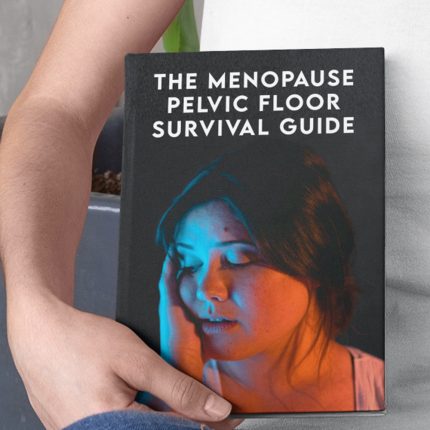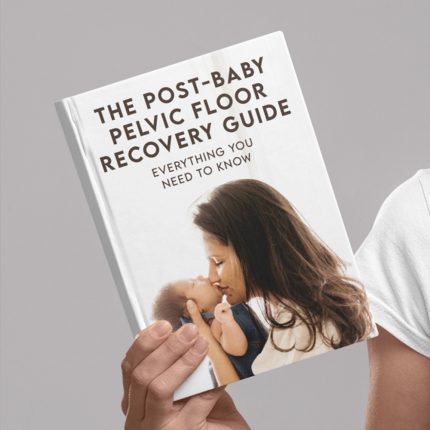High Tone Pelvic Floor Dysfunction is not your typical health chat—it's a deep dive into the quirky, intricate, and sometimes unexpectedly dramatic world of pelvic floor challenges. It might sound like a medical conundrum from a futuristic sci-fi flick, but trust us, it’s real, and it affects millions in ways that cut across lifestyle, stress, and everyday habits. Whether you're juggling deadlines, streaming your favorite shows, or hitting the gym, your body’s hidden powerhouse might be silently screaming for some TLC. Let’s break it down in a way that’s as engaging as your daily TikTok scroll and as informative as that binge-worthy podcast you love.
Quick Links to Useful Sections
- Understanding High Tone Pelvic Floor Dysfunction
- Recognizing the Signs and Symptoms
- The Underlying Culprits: Causes and Contributing Factors
- Stress and Anxiety
- Injury or Surgery
- Mental and Emotional Factors
- Poor Posture and Sedentary Lifestyles
- Conventional Therapies: Laying the Groundwork for Healing
- Pelvic Floor Physical Therapy
- Biofeedback and Electrical Stimulation
- Customized Exercise Programs
- Complementary Therapies: Exploring Alternative Avenues
- Acupuncture
- Chiropractic Care
- Massage and Myofascial Release
- Herbal and Nutritional Supplements
- Mind-Body Approaches: Aligning Mental and Physical Wellness
- Mindfulness Meditation
- Deep Breathing Techniques
- Yoga and Pilates
- Nutrition and Lifestyle: Fueling the Healing Process
- Embrace an Anti-Inflammatory Diet
- Stay Hydrated and Prioritize Lean Proteins
- Consistency in Physical Activity
- Quality Sleep and Effective Stress Management
- Crafting Your Personalized Pelvic Health Plan
- Step 1: Get a Thorough Assessment
- Step 2: Define Clear, Actionable Goals
- Step 3: Blend Treatment Modalities
- Step 4: Create a Routine That Sticks
- Step 5: Monitor, Adapt, and Celebrate Progress
- Resources and Community Support: Your Next Steps
- Online Forums and Social Media Groups
- Local Support Groups and Workshops
- Trusted Health and Wellness Websites
- Professional Guidance
- Frequently Asked Questions about High Tone Pelvic Floor Dysfunction
- Your Future in Pelvic Health: A Journey of Empowerment
Understanding High Tone Pelvic Floor Dysfunction
High Tone Pelvic Floor Dysfunction (HTPFD) occurs when the pelvic floor muscles are in a constant state of tension—kind of like that friend who’s forever on edge before a big exam. Instead of being relaxed and responsive, your pelvic muscles remain locked in a state of overactivity. And while we’re all familiar with the idea of muscles needing a good stretch after a long day, imagine if the same idea applied to muscles you’re not even aware of in your daily life!
You may have heard terms like “pelvic floor exercises,” “pelvic floor health,” or even “pelvic floor therapy” tossed around in wellness circles. In the realm of High Tone Pelvic Floor Dysfunction, these terms take on a special meaning. It’s not just about strengthening; it’s about learning to coax, relax, and sometimes even retrain your inner pelvic muscles. The dysfunction might result in discomfort, pain, urinary difficulties, or even sexual dysfunction—but here’s the kicker: the solution lies in understanding the delicate balance between tension and relaxation.
In essence, HTPFD is like having your favorite band play their songs out of sync—everything is there, but the harmony is off. By addressing the dysfunction, you’re not just dealing with physical symptoms, but you’re also recalibrating the intricate feedback loop between your muscles, nerves, and even your mind.
Recognizing the Signs and Symptoms
Let’s get real: knowing when your pelvic floor is off-kilter starts with listening to your body’s subtle (or not-so-subtle) hints. High Tone Pelvic Floor Dysfunction can manifest in several ways that might have you raising an eyebrow:
- Pain or Discomfort: Chronic pain in the pelvic area, lower back, hips, or even radiating pain that makes everyday activities a challenge.
- Urinary Issues: Experiencing an urgency or frequency that’s hard to ignore, or even a weak stream that leaves you wondering if your body is playing tricks on you.
- Sexual Dysfunction: Challenges with arousal, pain during intercourse, or decreased enjoyment in intimate moments can all be red flags.
- Digestive Troubles: Issues like constipation or bloating may also point to an overactive pelvic floor interfering with normal bodily functions.
- Muscle Spasms: Occasional or persistent spasms, much like your muscles throwing a mini tantrum, can signal an underlying problem.
It’s important to note that while these symptoms can be alarming, they are also treatable. Identifying HTPFD early on means you can start addressing it with a mix of conventional therapies, complementary approaches, and lifestyle tweaks.
For those navigating a fast-paced life—whether you're balancing work, nightlife, or creative pursuits—the key is to recognize these signs as a call to action rather than a ticket to chronic discomfort.
The Underlying Culprits: Causes and Contributing Factors
High Tone Pelvic Floor Dysfunction isn’t born overnight—it evolves over time due to a variety of factors that can range from physical trauma to the everyday stresses of modern life. Here are some of the big players behind the curtain:
EXPLORE OUR EXPERT WOMENS'S PELVIC FLOOR GUIDES WITH HIDDEN TIPS AND TRICKS
👩💻 Educational Book Store (Instant Download) 👩💻
Stress and Anxiety
Picture your pelvic floor muscles as tiny warriors constantly bracing for battle. Chronic stress can put these warriors on high alert, causing them to contract and never fully relax. This heightened state can lead to a ripple effect throughout your entire pelvic region.
Injury or Surgery
Trauma to the pelvic area—whether from childbirth, surgery, or an injury from an intense workout session—can cause the muscles to tighten in protective response. Over time, this can develop into a vicious cycle of muscle guarding and dysfunction.
Mental and Emotional Factors
Emotions aren’t just felt in the head—they have a physical component, too. Unresolved emotional trauma or ongoing anxiety can contribute to muscle tension, including in the pelvic floor. This connection underscores the importance of addressing mental health as part of your overall treatment team.
Poor Posture and Sedentary Lifestyles
Long hours slumped over a desk or hunching over your phone can put undue stress on your entire musculoskeletal system, including the pelvic floor. Over time, poor posture can lead to muscle imbalances that contribute to persistent tension.
Recognizing these underlying causes is the first step toward reclaiming your pelvic health. By understanding what triggers your high tone pelvic floor, you can tailor your therapy and lifestyle choices to mend not just the symptoms, but the root of the problem.
Conventional Therapies: Laying the Groundwork for Healing
When it comes to managing High Tone Pelvic Floor Dysfunction, conventional therapy remains the cornerstone of treatment. It’s the robust foundation that every effective strategy builds upon. Here, we explore the role of clinical interventions in alleviating symptoms.
Pelvic Floor Physical Therapy
Think of this as personal training for your deepest core muscles. Pelvic floor physical therapy involves sessions with experts who use a combination of manual techniques and prescribed exercises to help relax overactive muscles and restore proper function. Techniques such as myofascial release, deep tissue massage, and manual stretching help reduce tension, improve blood flow, and kick-start the healing process.
Biofeedback and Electrical Stimulation
Enter the world of tech-assisted healing. Biofeedback devices provide real-time insights into muscle activity, showing you exactly when you’re over-contracting. Electrical stimulation can help “remind” the muscles how to relax properly. These innovative tools are like having a mirror for your pelvic floor—you get to see and refine your workout, ensuring you’re engaging the right muscles in the right way.
Customized Exercise Programs
Unlike the one-size-fits-all workout routines you scroll past on social media, personalized exercise regimens address the unique needs of your pelvic floor. Your therapist may prescribe stretches, gentle strengthening motions, and relaxation techniques designed to gradually ease muscle tension. Over time, these exercises help restore balance, increase core stability, and relieve dysfunction.
Conventional therapies are vital—they offer evidence-based interventions that lay the groundwork for broader, more holistic healing. By combining these targeted treatments with complementary strategies, you’re setting the stage for a balanced and effective recovery process.
Complementary Therapies: Exploring Alternative Avenues
Sometimes, healing requires a bit of creativity. Complementary therapies bring a fresh perspective to the table, integrating natural, alternative methods with mainstream treatments. They focus not only on the physical body but also on the subtle realms of energy and emotion that impact pelvic floor function.
Acupuncture
This ancient Chinese practice involves inserting super-thin needles into precise body points—think of it as re-tuning your body like an acoustic guitar. For many dealing with HTPFD, acupuncture helps release blockages, improve circulation, and reset the nervous system. The outcome? Reduced pain, enhanced relaxation, and a path toward muscle balance.
Chiropractic Care
While most associate chiropractors with back adjustments, their role can extend to improving pelvic alignment too. Gentle manipulations and adjustments can relieve mechanical stress and improve nerve function. A well-aligned pelvis reduces unnecessary strain on your pelvic floor, allowing it to function more harmoniously.
Massage and Myofascial Release
Think of this as a spa day for your muscles. Regular sessions of therapeutic massage can break up scar tissue, ease muscle knots, and enhance overall tissue flexibility. Myofascial release techniques target the fibrous connective tissues, helping to release long-held tension in the pelvic muscles.
Herbal and Nutritional Supplements
Certain herbs and supplements are celebrated for their anti-inflammatory and muscle-relaxing properties. Omega-3 fatty acids, turmeric, and magnesium are just a few examples that can play a supportive role. These natural remedies complement conventional treatments by helping to reduce overall inflammation and promoting tissue healing.
Incorporating complementary therapies into your healing journey can be likened to adding a splash of color to a black-and-white sketch—suddenly, the full picture of your well-being comes to life. By exploring these alternative avenues, you extend your treatment toolbox well beyond standard physical therapy.
Mind-Body Approaches: Aligning Mental and Physical Wellness
Our minds and bodies have an uncanny ability to communicate, and nowhere is that more evident than in the practice of mind-body techniques. When facing High Tone Pelvic Floor Dysfunction, addressing mental stress and emotional tension can be as crucial as any physical therapy.
Mindfulness Meditation
Familiar with the buzz around mindfulness? This practice involves embracing the present moment with awareness—and yes, that includes your pelvic health. By meditating regularly, you can gradually lower stress levels, which in turn reduces the tension in your pelvic muscles. Even a few minutes a day can transform how your body manages stress and pain.
Deep Breathing Techniques
Ever noticed how a deep breath can make all the tension melt away? Diaphragmatic breathing is a powerful tool in this arsenal. By intentionally syncing your breathing with gentle pelvic muscle relaxation exercises, you can learn to control and reduce unwanted tension. This approach not only calms the mind but actively trains the muscles to relax properly.
Yoga and Pilates
Both yoga and Pilates champion body awareness, flexibility, and core strength. Specific poses and exercises are designed to stretch and relax the pelvic floor muscles. Think of yoga as a gentle guide that transitions you from stress to calm, while Pilates offers structured movements that improve muscle coordination and stability.
Embracing a mind-body connection is about more than just physical relaxation—it’s a holistic reset that honors the interplay between emotion and muscle function. When your mind is at ease, your pelvic floor is more likely to follow suit.
Nutrition and Lifestyle: Fueling the Healing Process
The food you eat and the habits you nurture aren’t just background noise—they’re front and center in your journey to harmonize your pelvic floor. High Tone Pelvic Floor Dysfunction demands a comprehensive look at nutrition and lifestyle, ensuring that every choice supports your body’s capacity to heal.
Embrace an Anti-Inflammatory Diet
Combatting inflammation is step one in the recovery process. Amp up your diet with vibrant fruits, leafy greens, whole grains, and healthy fats from sources like avocado and nuts. Foods rich in antioxidants not only reduce inflammation but also boost tissue repair and overall muscle function.
Stay Hydrated and Prioritize Lean Proteins
Water is your body’s natural elixir—it keeps muscles supple and nourishes connective tissues. Pair hydration with lean proteins such as chicken, fish, tofu, or legumes to supply the building blocks needed for muscle recovery. Think of it as fueling a high-performance machine: the better the fuel, the smoother the ride.
Consistency in Physical Activity
While it might be tempting to skip workouts on hectic days, consistent low-impact exercise can work wonders. Activities like brisk walking, swimming, and gentle yoga help maintain proper muscle function while preventing further strain. The goal isn’t to push to exhaustion, but to honor your body’s needs while nurturing a solid foundation of strength.
Quality Sleep and Effective Stress Management
Sleep is when your body resets. Aim for 7-9 hours of quality shut-eye each night to let physical and mental recovery work its magic. Pair this with effective stress management techniques—whether it’s journaling, digital detoxes, or simply unplugging for a while—to keep hormonal and muscle stress in check.
These nutrition and lifestyle tweaks are not magic pills—but they are potent tools that, when combined, create an environment in which your pelvic floor can truly begin to heal. It’s a lifestyle playbook that marries delicious, wholesome food with everyday stress-busting habits.
Crafting Your Personalized Pelvic Health Plan
One size never fits all in the realm of pelvic floor health. The road to wellness is as unique as your Spotify playlist, and crafting a personalized plan is the ultimate power move. Here’s how to build a multi-faceted approach tailored to your specific needs:
Step 1: Get a Thorough Assessment
Before you hit play on any healing regimen, start with a comprehensive evaluation by a pelvic floor specialist. They’ll look beyond the surface, taking into account your physical symptoms, lifestyle habits, and even emotional well-being. This thorough assessment is the first step toward a truly personalized plan.
Step 2: Define Clear, Actionable Goals
Whether your mission is to reduce chronic pain, improve urinary control, or simply enhance overall core strength, setting specific and measurable goals ensures you know what success looks like. It’s like curating the perfect playlist—each track (or step) must contribute to the overall vibe of healing.
Step 3: Blend Treatment Modalities
Marry conventional therapies with complementary practices for a well-rounded approach. This could mean combining personalized pelvic floor exercises and biofeedback sessions with acupuncture, mindfulness meditation, or even a steady dose of yoga. The result is a dynamic toolkit that adapts as you progress.
Step 4: Create a Routine That Sticks
Consistency is the secret sauce. Develop a daily routine that seamlessly weaves together exercise, mindfulness breaks, and nutritional meal planning. Use apps, reminders, or even a charismatic accountability buddy to keep you on track. This routine isn’t just about healing—it’s about building long-term resilience.
Step 5: Monitor, Adapt, and Celebrate Progress
Keep a journal or use digital tools to track improvements and note any setbacks. Regular reviews with your specialist can help tweak the plan, ensuring that every step you take is in tune with your evolving needs. And remember, every little victory deserves a mini celebration!
By combining these steps, you’re not only addressing High Tone Pelvic Floor Dysfunction—you’re building a holistic, sustainable strategy that pays dividends in every facet of your life.
Resources and Community Support: Your Next Steps
No one should go it alone on their journey to optimal pelvic floor health. Accessing the right resources and community support can provide the motivation, knowledge, and companionship needed to navigate this complex terrain. Here’s how to enrich your healing journey with support from experts and peers:
Online Forums and Social Media Groups
Dive into online communities where individuals share their experiences, strategies, and success stories. From Facebook groups to Reddit threads dedicated to pelvic floor health, these platforms can offer insightful tips, supportive discussions, and a space to vent when the days get tough.
Local Support Groups and Workshops
Look for in-person workshops or seminars hosted by pelvic health clinics. These gatherings provide not just practical advice, but also a chance to connect with professionals and fellow sufferers who understand the unique challenges of High Tone Pelvic Floor Dysfunction.
Trusted Health and Wellness Websites
Curate a list of reputable websites, blogs, and video channels that focus on pelvic floor health. Many clinics offer free resources, webinars, and downloadable guides that demystify the complexities of treatment and empower you with knowledge.
Professional Guidance
When in doubt, consult professionals—from pelvic floor physical therapists to nutritionists and mental health counselors. Their expert guidance can help tailor your routine, adjust medications or supplements, and keep your recovery on the right track.
These community resources and expert networks are more than just add-ons; they are essential pillars in your holistic journey. Whether you’re looking for practical advice, emotional support, or validated medical insights, the right community can make all the difference.
Ready to take the next step? Bookmark a few supportive pages, join a community forum, or schedule a consultation with a pelvic health expert. Your journey to empowered pelvic health has never been more connected or accessible.
Frequently Asked Questions about High Tone Pelvic Floor Dysfunction
Navigating through complex pelvic health issues raises plenty of questions. Here are some frequently asked questions (FAQs) designed to shed light on the intricacies of High Tone Pelvic Floor Dysfunction and provide actionable insights.
1. What is High Tone Pelvic Floor Dysfunction?
High Tone Pelvic Floor Dysfunction occurs when the pelvic floor muscles remain in a constant state of tension. This overactivity can lead to chronic pain, urinary issues, sexual dysfunction, and other related symptoms.
2. How does stress play a role in HTPFD?
Chronic stress and anxiety can cause the pelvic floor muscles to contract involuntarily. This persistent tension can worsen symptoms and make it harder for the muscles to relax naturally.
3. Can lifestyle changes help improve pelvic floor function?
Absolutely. A balanced diet, consistent physical activity, proper hydration, quality sleep, and stress management are all critical components of an effective pelvic floor health plan.
4. What are some conventional treatments for HTPFD?
Conventional therapies include pelvic floor physical therapy, specialized exercise programs, manual techniques like myofascial release, and technological aids such as biofeedback and electrical stimulation.
5. Are complementary therapies effective in treating HTPFD?
Many individuals experience added benefits from complementary approaches such as acupuncture, chiropractic care, massage therapy, and herbal supplements, which work synergistically with traditional treatments.
6. How does the mind-body connection influence pelvic floor health?
Techniques like mindfulness, meditation, yoga, and deep breathing help reduce overall muscle tension and improve the body’s ability to relax, thus enhancing pelvic floor function.
7. Can I address HTPFD issues at home?
While many effective exercises and relaxation techniques can be practiced at home, it is important to consult with a specialist for a personalized assessment and guidance, especially if experiencing severe symptoms.
8. How do I know if I need professional pelvic floor therapy?
If you’re experiencing chronic pelvic pain, ongoing urinary issues, or sexual discomfort, it’s a good idea to consult with a specialist who can assess your situation and recommend a tailored treatment plan.
9. What role do nutritional supplements play in healing?
Supplements that reduce inflammation and support muscle repair—like omega-3 fatty acids, magnesium, and turmeric—can complement your therapy regimen and enhance overall recovery.
10. Is there a cure for High Tone Pelvic Floor Dysfunction?
While a permanent “cure” may not be guaranteed, a well-rounded, integrative approach that includes conventional, complementary, and lifestyle interventions can significantly alleviate symptoms and improve quality of life.
Your Future in Pelvic Health: A Journey of Empowerment
Tackling High Tone Pelvic Floor Dysfunction is more than just a remedial effort—it’s a transformative journey toward empowered living. Every step you take, every mindful breath, and every tailored exercise is a powerful declaration: you’re reclaiming control over your body and redefining your wellness narrative.
Embrace the multi-faceted approach to pelvic health that bridges conventional medicine with complementary therapies, integrates mind-body techniques, and honors the holistic connection between nutrition and lifestyle. The journey may have its challenges, but remember, every challenge is an opportunity to grow stronger and more resilient.
Whether you’re a busy professional, a creative soul, or simply someone eager to explore innovative wellness strategies, know that this journey is uniquely yours. Your days will be marked by gradual shifts—small, consistent improvements that add up to a big impact on your overall quality of life.
As you move forward, keep your focus on progress rather than perfection. Experiment with new therapies, lean on community support, and celebrate each victory along the way. Your pelvic health is an integral part of your overall well-being, and nurturing it is a vital act of self-care.
The future is bright for those who dare to take charge of their health. By embracing a balanced, integrative approach, you’re not just managing symptoms—you’re unlocking a pathway to a life where your body, mind, and spirit function in dynamic harmony. Your empowered pelvic health journey starts now, and every step is a stride toward a healthier, happier you.
Curious About Your Pelvic Floor? Explore our curated collection of insightful articles to learn more and take charge of your health.
- Pelvic Floor Basics
- Pelvic Floor Exercises & Workouts
- Pelvic Floor Kegel Exercises: Techniques & Benefits
- Advanced Pelvic Floor Workouts
- Pre/Post-Natal Pelvic Floor Routines
- Pelvic Floor Exercises for Men
- Pelvic Floor Therapy Techniques
- At-home vs Professional Pelvic Floor Therapy Options
- Diet & Lifestyle for a Healthy Pelvic Floor
- Pelvic Floor Health & Wellness
- Specialized Pelvic Floor Conditions & Treatments
Now back to the main article!






















